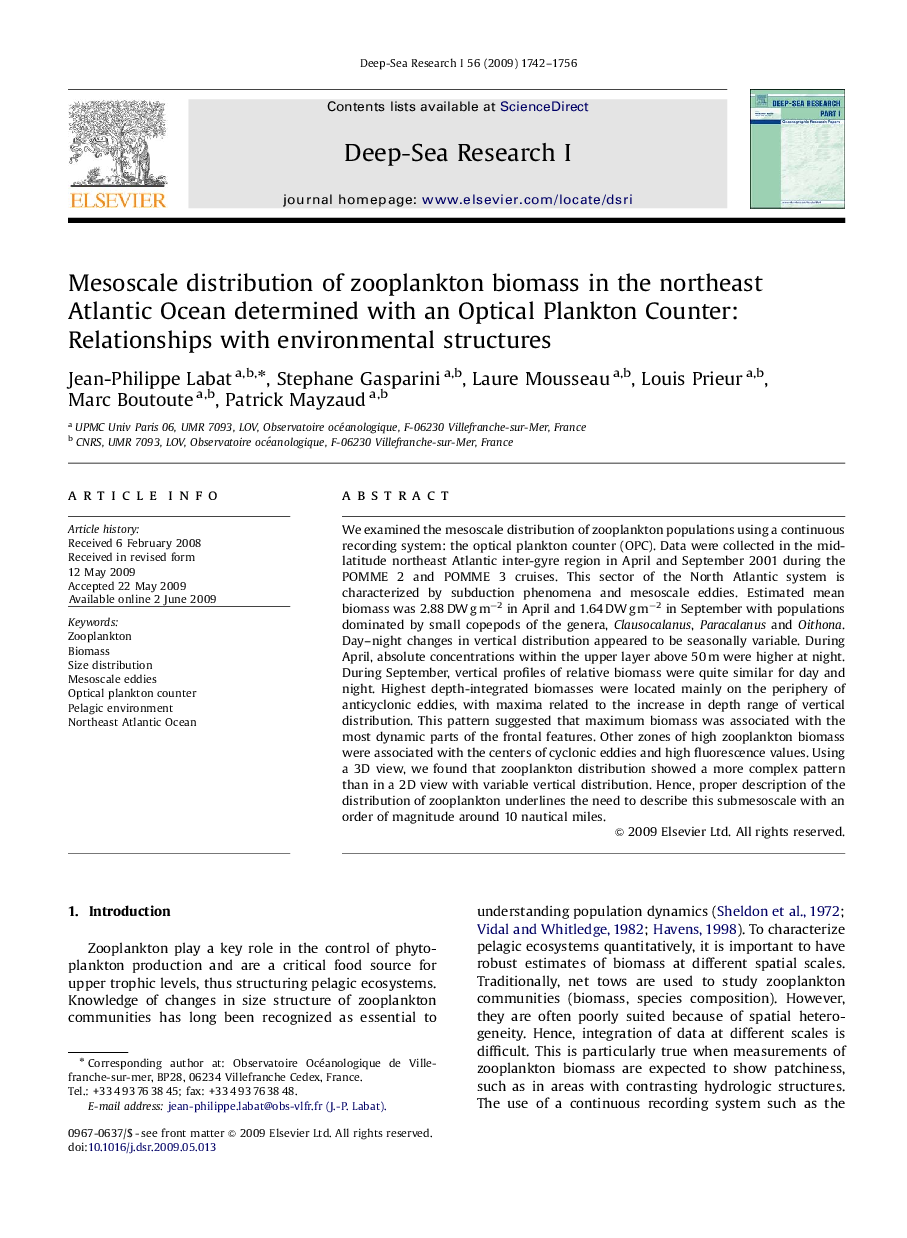| Article ID | Journal | Published Year | Pages | File Type |
|---|---|---|---|---|
| 4535200 | Deep Sea Research Part I: Oceanographic Research Papers | 2009 | 15 Pages |
We examined the mesoscale distribution of zooplankton populations using a continuous recording system: the optical plankton counter (OPC). Data were collected in the mid-latitude northeast Atlantic inter-gyre region in April and September 2001 during the POMME 2 and POMME 3 cruises. This sector of the North Atlantic system is characterized by subduction phenomena and mesoscale eddies. Estimated mean biomass was 2.88 DW g m−2 in April and 1.64 DW g m−2 in September with populations dominated by small copepods of the genera, Clausocalanus, Paracalanus and Oithona. Day–night changes in vertical distribution appeared to be seasonally variable. During April, absolute concentrations within the upper layer above 50 m were higher at night. During September, vertical profiles of relative biomass were quite similar for day and night. Highest depth-integrated biomasses were located mainly on the periphery of anticyclonic eddies, with maxima related to the increase in depth range of vertical distribution. This pattern suggested that maximum biomass was associated with the most dynamic parts of the frontal features. Other zones of high zooplankton biomass were associated with the centers of cyclonic eddies and high fluorescence values. Using a 3D view, we found that zooplankton distribution showed a more complex pattern than in a 2D view with variable vertical distribution. Hence, proper description of the distribution of zooplankton underlines the need to describe this submesoscale with an order of magnitude around 10 nautical miles.
